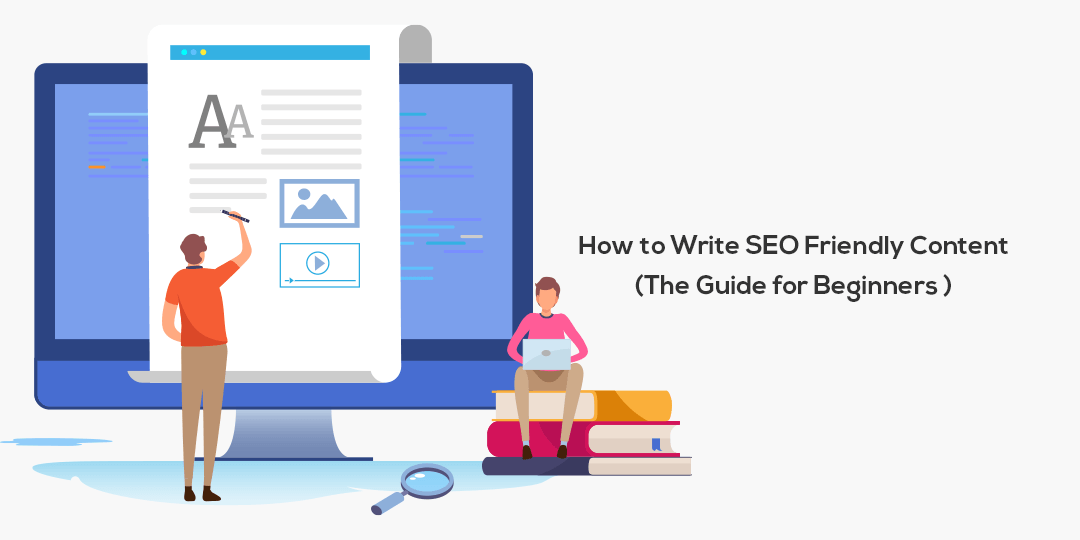Hello Folks,
While almost anyone can write a readable article, not everyone can write an SEO-optimized article. Companies seek SEO-friendly content because of its advantages with search engines. Some of these advantages include:
- High ranking on search engines.
- An increase in the amount of relevant traffic to your website.
- Increasing website credibility.
- Increase in company revenue.
For your website to enjoy the above-listed benefits, you will definitely need to learn how to write SEO-friendly content. Here is a simple, straightforward, and beginner-friendly guide to getting you started writing content for SEO optimization.
1. Start with research
First of all, do some research. Research is vital for SEO optimized content because it:
- Helps you pick the right keyword for your content.
- Will help you determine the type of article to write.
- Will guide you on the appropriate length of your article.
- Help you determine if there is previous content on the topic and how best to use said content for an outline.
While you can research without tools, there are some SEO optimization tools in the market to help you do better research.
2. Keyword Search Intent
While this step could fall under step 1, keyword search intent is broad enough to be a step of its own.
Once you have gone through step 1, put your intended keyword into a search engine to see what kind of articles are currently ranking high. This will give you an idea of what your search engine deems a good search query for the intended keyword.
3. Write High-Quality Content
When writing content, the quality of your content should be high. Here’s why:
- Content is one of the top three ranking factors for Google.
- High-quality content will give your readers a great experience, thus telling search engines it’s valuable. This will ensure you keep getting ranked high.
- High-quality content helps a lot when it comes to garnering backlinks (which also helps in high search engine ranking).
All that said, here are some tips for writing high-quality content:
- Write long-form content. A recent analysis by Backlinko revealed that the average Google first page result has more than 1000 words in their content.
- Research what your competitors are doing.
- Use three to five keywords in your content.
- Center your keyword use around a primary keyword and its related variations.
4. Craft Meta-description, headings, page titles.
Things like content headlines, page titles, and meta descriptions play a huge role in ensuring your content is SEO-friendly.
- Meta Description:
- This is what your potential website visitors see before deciding to click on your website page link.
- They are 156 characters long and should contain your primary keyword.
- Also, they should tell your readers what they stand to gain by clicking on your content link.
A highly optimized SEO content has a great meta description with at least one of your keywords in it.
- Headings:
- Using proper headings (H1, H2, H3) can help your SEO ranking.
- By default, your content title takes up the H1 heading, so your sub-headings will start from H2.
- Make sure you are using your keywords in at least one of your headings.
5. Include Internal and External Links
Next, including internal and external links in your content writing is relevant to your SEO ranking on search engines. Adding links to your web page and SEO content is vital for web crawling. This indicates to search engines that your keywords are associated with your website pages and external web pages. Here are a few tips on how to add links the right way in your article:
- Disperse links evenly throughout your content. This sends signals to search engines that your content is relevant.
- You can add links within site navigation, footers, breadcrumbs, and content.
- Ensure you are linking to authoritative sources. Studies show that search engines will determine your website’s authority based on the authority sources you link to.
- Try to follow the rule of thumb of one link for at least every 100 words.
- Ensure links are descriptive and relevant.
6. Optimize Image
Another vital step is to optimize your images for SEO ranking. While adding images to your SEO content is an excellent way to engage your readers, Google, unfortunately, can’t read pictures. So, you have to optimize them. Here are the steps for optimizing images:
- Add your keywords to your alt text.
- Make sure your image alt text is short but descriptive.
- Make sure your image is appropriately named.
- Separate descriptive phrases in the image file name with a hyphen.
- When saving images, make sure they aren’t large, else they can slow page loading time.
7. Ensure Content is Shareable
Sharable content is vital because it drives more traffic to your website. Which, in turn, tells search engines that people find your content valuable. So,
- Make social sharing links visible on your website page.
- Specify Open Graph protocol tags on your site. This protocol makes sure you properly format every single content and page on your site for social sharing. Images, page descriptions, site titles, etc. are all included. You can do this with a simple plugin.
- If necessary, use social share plugins and tools for better customization of your share links. With some plugins, you can customize the location of your social sharing buttons,
8. Invest in Visual Content
Lastly, you should make sure your content is visually appealing. To be visually appealing is to have enough images, infographics, videos, etc. on your website pages and published articles.
Human beings are visual creatures, so having adequate images on your web page or written content will increase engagement on your page. A highly engaged page means a decreased exit rate. And, a reduced exit rate means search engines will rank your site higher.
Over to you!
Start with these eight steps to get your website SEO ready. These steps work hand in hand to get your website SEO optimized. But remember, if your visitors love your content, search engines will keep on recommending them for people. So keep creating quality content while following our SEO optimization steps.
Related Articles:
Top Game-Changing SEO Tips for Ecommerce in 2020
E-Commerce SEO Trends For 2020: What You Need to Know
SEO in 2020! How will it change? (Updated)





